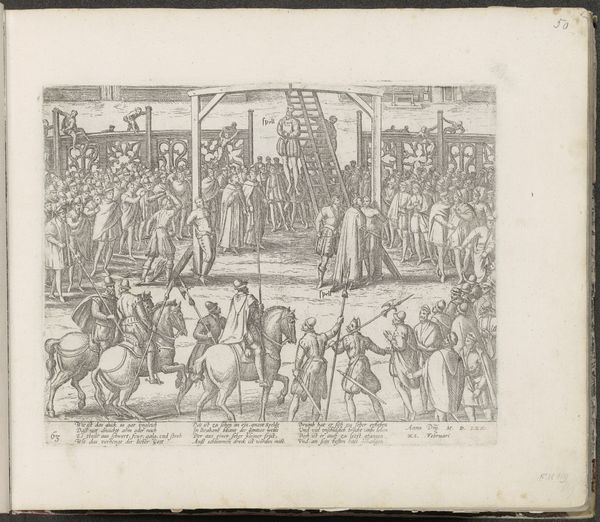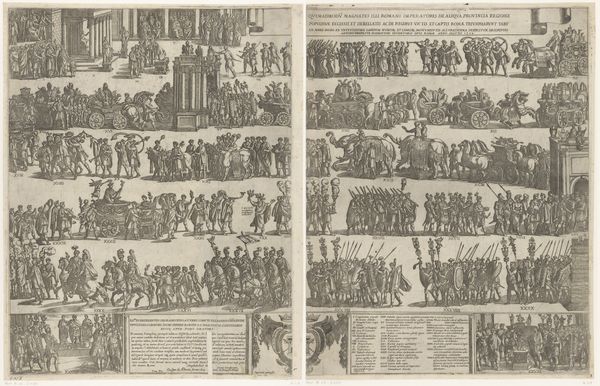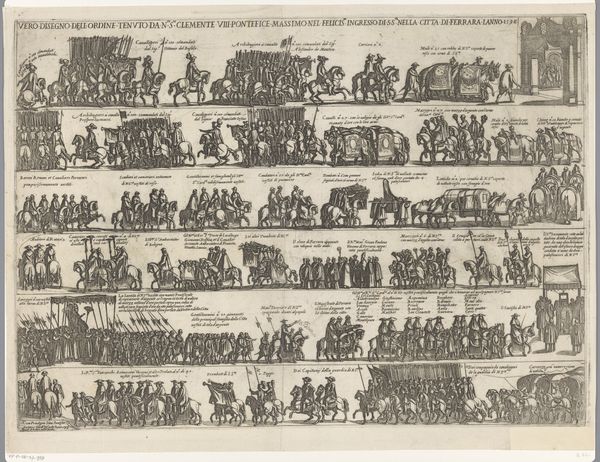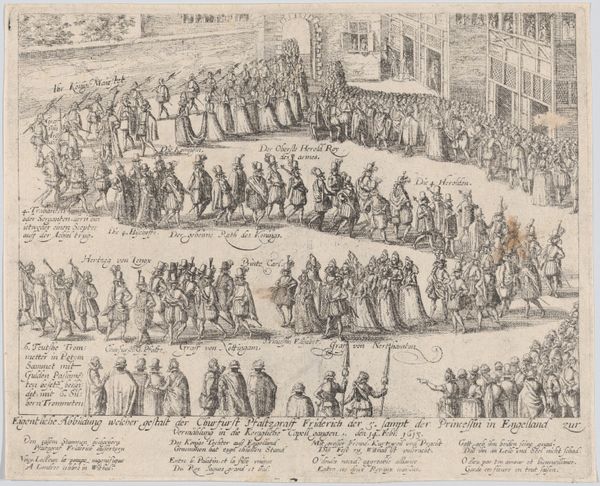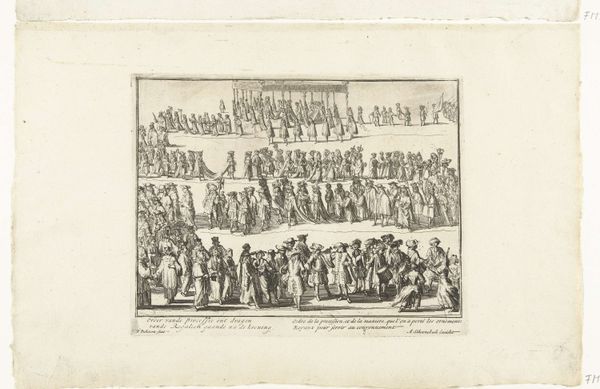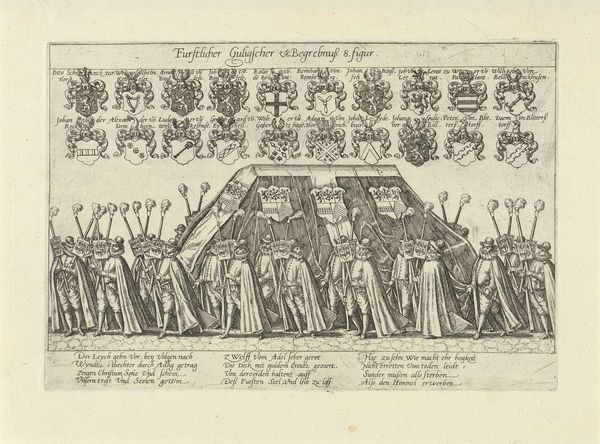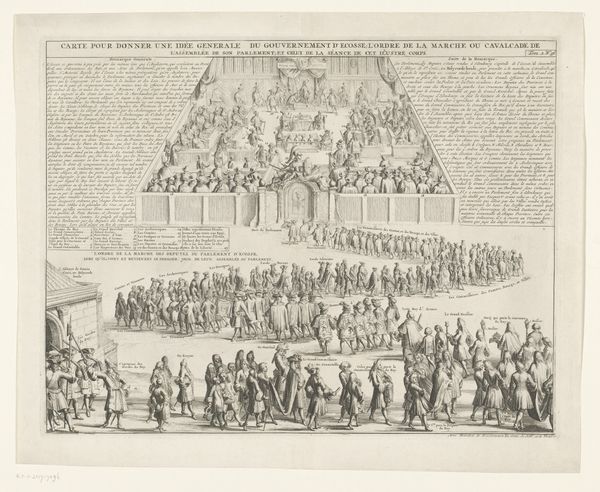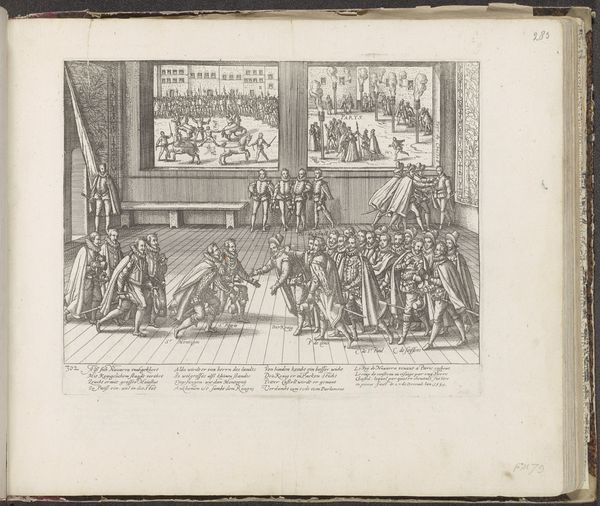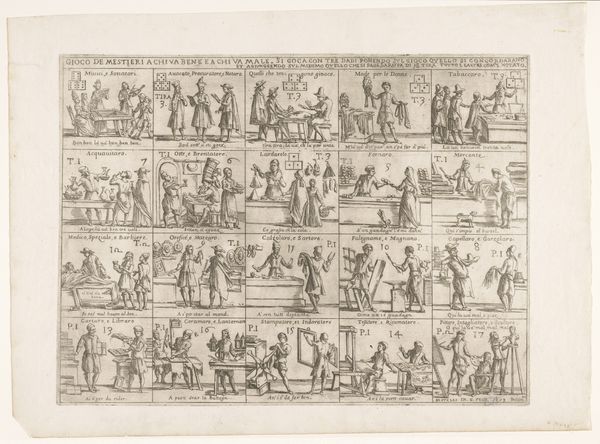
print, engraving
# print
#
old engraving style
#
figuration
#
11_renaissance
#
line
#
cityscape
#
history-painting
#
italian-renaissance
#
engraving
#
realism
Dimensions: height 324 mm, width 433 mm
Copyright: Rijks Museum: Open Domain
Curator: Welcome. Here we have Étienne Dupérac's "Romeinse triomftocht", an engraving created around 1580. Editor: My initial impression is one of carefully orchestrated chaos. It's a packed scene, full of meticulously rendered figures, and the textures created by the engraving process give it a distinctly historical feel. Curator: Precisely. Look at how Dupérac has used line work to suggest depth and movement, guiding your eye through the tiers of the procession. The labor involved in producing such a detailed print would have been considerable. Engravings like these weren’t simply aesthetic objects; they were vital tools for disseminating information and political ideology in the Renaissance. Editor: The triumph itself is such a potent symbol. Each figure, each object—the elephants, the laurel wreaths, the chariots—speaks volumes about power, conquest, and the established order. I am curious to explore this notion further in connection to cultural memory. This image distills very specific, recognizable components from Roman culture. Curator: The medium itself contributes to that feeling. Printmaking allowed for a wider distribution of classical imagery, helping to shape a collective understanding and, indeed, a cultural memory of Rome across Europe. What this engraving also emphasizes for me is the highly skilled work and material resources necessary for creating such grand celebrations, both the real event depicted and the subsequent image of it. The act of engraving demands an exactness. Editor: True, the symbolism is inextricably linked to that tangible effort. Dupérac’s commitment mirrors, in a sense, the dedication required to uphold the ideals it depicts, and the commitment involved to achieve success within its cultural narrative. But one must ask what the image is omitting. Whose labor has made possible the event it depicts? The image speaks a story, but we need to ask about the conditions under which it can function. Curator: Exactly, questioning absences enriches our experience and brings us to the work’s material and historical realities. Editor: Thinking through the interplay between visual codes and materials certainly opens new lines of inquiry for interpreting the image. Curator: And hopefully enriches our understanding of the artistic practice, labor, and production which has also gone into bringing "Romeinse triomftocht" to life.
Comments
No comments
Be the first to comment and join the conversation on the ultimate creative platform.



